- Army
- Air Defense Systems
- Anti-tank systems and vehicles
- Armored Vehicles
- Armoured personnel carriers
- Artillery Vehicles and Weapons
- Command Post
- Communication Vehicles and Systems
- Electronic Warfare
- Engineer | Maintenance Vehicles
- Infantry Fighting Vehicles
- Main Battle Tanks
- Missiles
- Tactical and Logistic Vehicles
- Radars
- Unmanned Systems
- Weapons
- Navy
- Air
Crotale NG
Crotale NG New Generation
Short-range air defense missile system - France

Description
The Crotale NG (Next Generation) is a modernized version of the Crotale short-range air defense missile system, which was originally developed by the French defense company Thomson-CSF, now known as Thales Group. The Crotale NG system is designed to protect military units, strategic sites, and civilian areas from a wide range of airborne threats, such as fixed-wing aircraft, helicopters, and cruise missiles.
The original Crotale system has its roots in the 1960s when it was first developed to meet the requirements of the French military. Over the years, the Crotale system has undergone several upgrades, with the Crotale NG being the most advanced iteration of the system.
Development of the Crotale NG began in the early 1990s, with an aim to enhance the capabilities of the original system. The key improvements of the Crotale NG include a new-generation radar system, improved target detection and tracking capabilities, and an updated missile design.
The new-generation radar system provides better target detection and engagement ranges and allows the system to track multiple targets simultaneously. The updated missile design incorporates a new solid propellant motor, a more advanced guidance system, and an enhanced warhead for greater lethality. These improvements collectively contribute to Crotale NG's superior performance compared to its predecessors.
The Crotale NG entered service with the French Armed Forces in the late 1990s, and it has since been exported to several other countries, such as Finland and Greece. The system has been battle-tested in various conflicts and has demonstrated its effectiveness in countering a wide range of airborne threats. Today, the Crotale NG continues to be a highly regarded short-range air defense system and is used by several armed forces worldwide.
In November 2022, France delivered the Crotale NG to Ukraine in the framework of military aid due to the invasion of the country by the Russian.armed forces.
Crotale NG variants:
- ItO 90: A Finnish adaptation of the Crotale NG, features several modifications to meet local requirements. Mounted on a Sisu XA-181 armored personnel carrier chassis, it offers increased mobility, though it can only be used when stationary. The armored hull provides some protection for the crew of four. In 1992, the ItO 90 entered Finnish military service, with 21 units built before production ceased in 1993. Between 2007 and 2010, all operational Finnish ItO 90 systems were upgraded to the ItO 90M standard, and they remained in service as of 2023.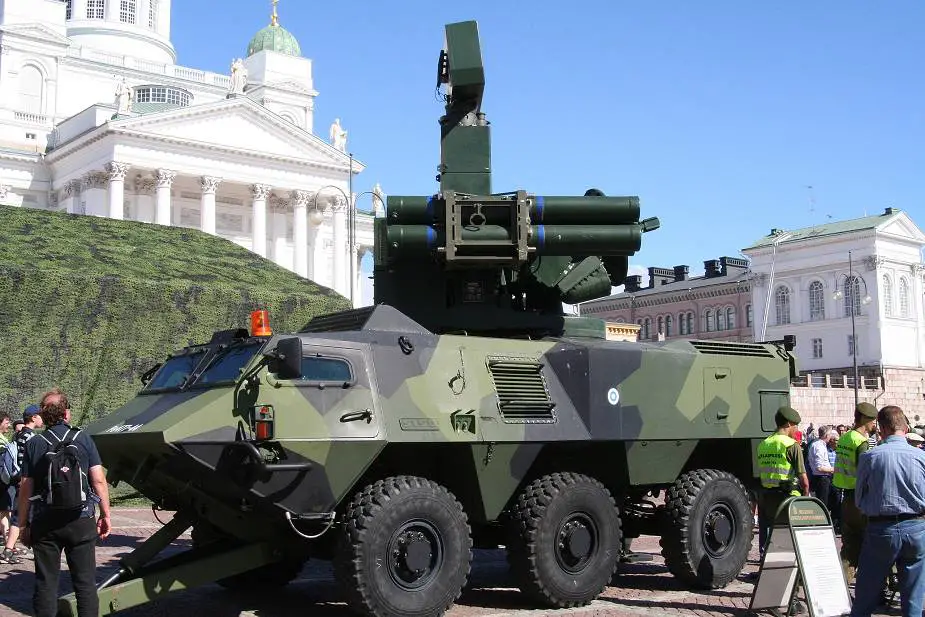
- Pegasus, also known as K-SAM or Chunma: is a South Korean air defense missile system developed in collaboration between Samsung and Thales. After being awarded the development contract in 1999, the system was designed with local requirements in mind. It features a new indigenous missile, a new sensor system, and is based on the K-21 infantry fighting vehicle chassis. A total of 114 units were produced.
Technical Data
| Launcher Unit |
|
The missile launcher unit of the Crotale NG is based on an 6x6 shelter wheeled trailer but it can also be mounted on a tracked or towed platform, depending on the specific requirements of the user. The roof of the shelter is fitted with a rectangular box-like structure housing eight individual missile canisters arranged in two rows of four. These canisters hold the ready-to-fire Crotale NG missiles, which are vertically launched to engage targets. At the front of the weapon station is mounted an S-Band Pulse Doppler radar which is used to detect aerial threats at a maximum range of 20 km. At the rear of the weapon station is mounted the tracking or engagement Ku-band TWT radar which is mounted on an extendable mast. It has a maximum range of 30 km. These two radar systems work in conjunction to provide the Crotale NG with an effective and accurate means of detecting, tracking, and engaging airborne threats. The use of separate radars for target acquisition and missile guidance ensures that the system can maintain a high level of situational awareness while effectively engaging multiple targets simultaneously.
The Crotale NG turret is also equipped with an optoelectronic tracking system featuring a thermal camera with dual field-of-view capabilities and electronic magnification, offering 8.1° or 2.7° in azimuth and 5.4° or 1.8° in elevation. This camera can detect targets at a range of up to 19 km. Additionally, a daylight CCD (Charge-Coupled Device) camera is included, which has a field of view of 2.4° in azimuth and 1.8° in elevation. This camera can detect targets at distances of up to 15 km. An infrared (IR) localizer, positioned beneath the CCD camera, is utilized for missile guidance and tracking. |
 |
| The Crotale NG weapon station is equipped with an S-Band Pulse Doppler radar mounted at the front and eight missile container launchers. |
| Missiles |
|
The VT-1 missile is the primary surface-to-air missile used in the Crotale NG air defense system. It was developed by Thales Group, a French multinational company specializing in aerospace, defense, and security solutions. The VT-1 is an advanced missile designed to counter various airborne threats, including fixed-wing aircraft, helicopters, and cruise missiles.
The VT-1 missile is designed with hyper-velocity and high agility for an optimal interception, making it highly effective against various airborne threats. Its anti-missile capability is further enhanced by a 13 kg focused blast and fragmentation warhead, ensuring effective target destruction upon impact. The missile features an RF electromagnetic proximity fuse that maintains all-weather effectiveness and maximum resistance to electronic countermeasures (ECM). The missile's guidance system employs Command to Line Of Sight (CLOS) guidance, which is immune to ECM interference. When combined with a multi-sensor mode, the CLOS guidance contributes to a robust fire control system. With a maintenance-free lifespan of 15 years, the VT-1 missile proves to be a reliable and cost-effective solution for air defense. The VT-1 missile has impressive specifications, including a velocity of Mach 3.5+, allowing it to cover 8 km in just 10.3 seconds. Its unique maneuverability allows the missile to perform at 35g for up to 8 km. The missile weighs 76 kg, measures 2.35 meters in length, and has a diameter of 0.165 meters. It boasts an interception range of greater than 11 km and a ceiling of 9 km, making it a formidable surface-to-air missile for the Crotale NG system. Thales also developed the Crotale Mk3, a long-range variant of the Crotale NG, capable of reaching a maximum effective range of 16,000 meters and an altitude of 9,000 meters. The Crotale Mk3, when combined with the new Shikra 3D multibeam surveillance radar (derived from Thales Netherlands' SMART-S Mk2 search radar), forms Thales's Multishield system. This system is designed to protect sensitive sites and operational theaters. The Crotale Mk3 had its first test firing in February 2007 at the DGA Centre d'Essais des Landes (CELM) missile launch range in Biscarrosse, South West France. During the test, it successfully intercepted and destroyed a target at a distance of over 14,000 meters. In January 2008, the Mk3 missile system demonstrated its capabilities by intercepting and destroying a Banshee target drone at an altitude of 970 meters and a range of 8,000 meters, taking only 11 seconds to complete the engagement. In another test firing, the Crotale Mk3 destroyed a target flying at an altitude of 500 meters and a range of 15,000 meters. |
| Mobility |
| The Crotale NG shelter launcher unit is towed by a 6x6 ARQUUS military truck. The truck and launcher combination is operated by a crew of 3, including a commander, an air defense system operator, and a driver for the truck carrier. The system requires a preparation time of 5 minutes before it is ready for firing. The Crotale NG can be mounted on various chassis types. For instance, Finland operates systems mounted on 6x6 armored personnel carrier chassis, whereas South Korea's systems are based on tracked infantry fighting vehicle chassis. |
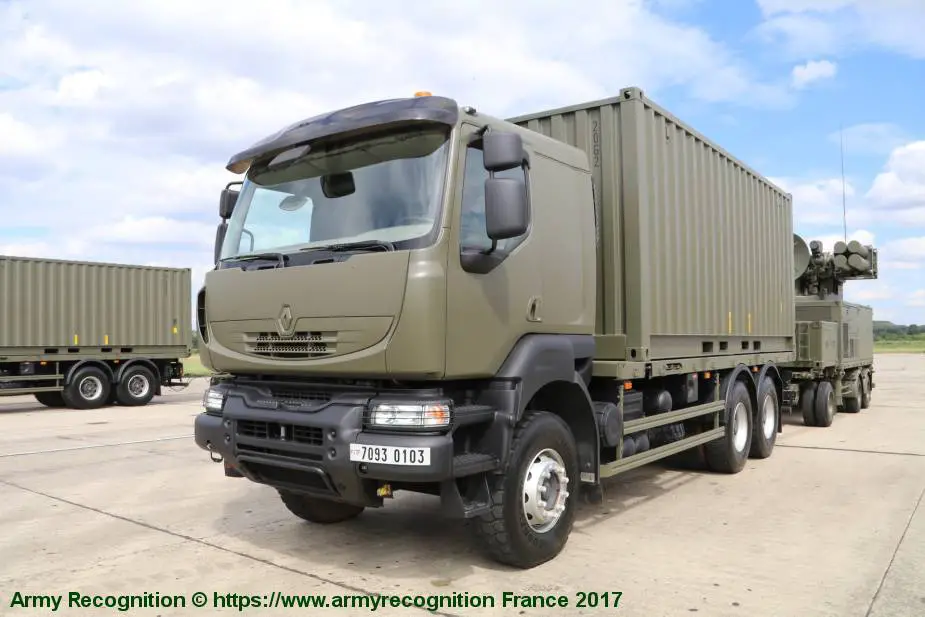 |
| The Crotale NG shelter trailer is towed by a Renault 6x6 truck. |
| Command and Controls |
| All the firing operations of the Crotale NG are controlled from inside the shelter trailer working together to control and manage the various aspects of the system, such as radar operation, target tracking, and missile launching. This protected environment allows the crew to focus on their tasks and maintain the effectiveness of the Crotale NG system, even in challenging conditions. The firing operations of the Crotale NG air defense system involve a series of steps carried out by the crew to successfully detect, track, and engage airborne threats. Initially, the system operator activates the search radar to continuously scan the airspace for potential targets within its operational range. The radar data is then processed and displayed for the operator inside the cabin. Upon detecting a potential target, the system operator evaluates its characteristics to determine if it poses a hostile threat. If deemed hostile, the operator initiates tracking using the fire control radar. With the target being tracked, the commander decides to engage, prompting the system operator to select the appropriate missile and prepare the launcher for firing. Once the launcher is ready and the target is within the engagement envelope, the system operator launches the VT-1 missile. The missile is vertically launched from its canister, and its motor ignites, propelling it toward the target. The VT-1 missile employs semi-active radar homing guidance, relying on continuous updates from the fire control radar. This radar provides the missile with information about the target's position and speed, allowing the missile to adjust its course during flight and maintain an intercept trajectory. As the missile nears the target, its proximity fuse activates the high-explosive fragmentation warhead, which detonates upon reaching close proximity to the target, effectively destroying it. Throughout the entire process, the crew inside the cabin coordinates their actions and communicates with other air defense units to ensure the successful operation of the Crotale NG air defense system. |
Specifications
| Type | Weight Missile |
| Short-range air defense missile system | 76 kg |
| Country users | Length and Diameter Missile |
| Finland, France, Greece, Ukraine | Length: 2.35m; Diameter: 0.165m |
| Designer Country | Speed Missile |
| France | Mach 3.5+ (e.g. 10.3 second flight time to 8km) |
| Warhead Missile | Interception Range Missile |
| 13 kg focused blast and fragmentation warhead for highly effective target destruction | Greater than 11 km |
| Guidance Systems | Radars |
| CLOS (Command to Line Of Sight) guidance combined with multi-sensor mode provides a robust fire control system | S-Band Pulse Doppler radar which is used to detect aerial threats at a maximum range of 20 km and Ku-band TWT radar which is mounted on an extendable mast with a maximum range of 30 km. |
Details View
 |
|
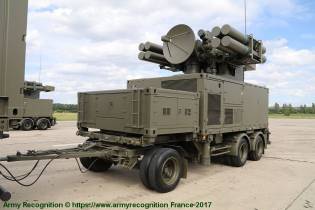 |
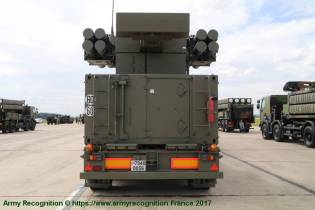 |
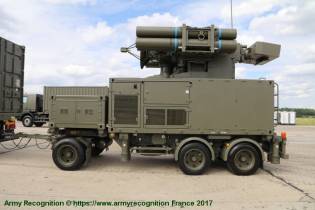 |
 |
Pictures - Video



























